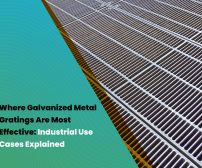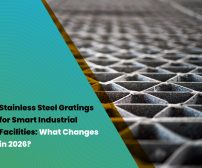
What Is a Conveyor System?
A conveyor is a faster and more efficient alternative to manually lugging materials around a packing center or warehouse. Essentially, it’s a handling apparatus that automatically transports goods along a predefined route. Conveyor systems consist of a belt stretched out over multiple pulleys, forming a closed-loop that continuously rotates.
The primary drive pulley drives the belt, transporting items from one end of the room to another. Conveyor systems have a range of benefits that make them essential to a workplace: they make moving large and bulky items more accessible. They also reduce both labor costs for the company and stress on workers.
Major Types of Conveyor Systems
Conveyor systems are primarily made with the same goals in mind: to reduce the amount of time it takes to move objects to a different location. Still, there are several significant types of conveyor systems out there. Keep reading to know about the three significant types of conveyor systems:
Belt Conveyors
Belt Conveyors are the most commonly found type of Conveyor Systems out there & a great way of material handling in fast way. A cover, usually made of rubber or plastic, is placed on top of the belt to act as a platform for placing things. Belt Conveyors typically differ based on the material the strap is made of, which can include things like:
- Solid Belts: Made of rubber or fabric like nylon, mining and milling industries usually choose rubber belts.
- Filter Belts: Filter belts are found in water treatment plants, where they’re used to filter out toxins and pollutants.
- Plastic Interlocking Belts: Interlocking belts are typically found in the automobile manufacturing and food packaging industries.
Feed Conveyors
A feed conveyor is vastly different from a belt conveyor. These conveyors are mostly found under a vehicle and with an attachment, like a shredder used to recycle soft materials like paper or cardboard. The conveyor feeds the shredded material into the bin, creating a fast and efficient way to gather lots of material quickly.
Feed Conveyors are sometimes the longest conveyors since their length can vary from short conveyors feeding into a tank or longer belts sending mined rock large distances to processing.
Roller Conveyors
Roller Conveyors are meant for transporting solid cargo exclusively but usually work in ideal conditions faster than belt conveyors. The conveyor system itself consists of rotating roller bars spaced out at short, regular intervals. Most roller conveyors are chain or belt-driven, but some can also be line-shaft-driven or work by utilizing gravity. The bars transfer cargo by rotating and pushing large solid objects fast.
This conveyor of choice for packing centers that need products moved around a single floor with remarkable speed since their design is meant for large objects with flat surfaces.
Benefits of Conveyor Systems
Conveyor systems are a more easily accessible alternative to manually moving cargo around locations through means like forklifts. Besides making sure that your plant is operating at the maximum efficiency possible, conveyor systems also have a range of other benefits, like:
1. Decreasing Personal Risk
There’s always a chance of a mishap when somebody is manually moving cargo. With stable, properly installed conveyor belts, you can all but eliminate the possibility of injury to your workforce. Heavy loads can be easily carried by the system, instead of forklifts where a disbalance could easily cause the item to fall on somebody and significantly injure them!
2. Ensuring Safety of Products
Conveyor belts also remove the chance of damage to the products being manufactured, packaged, or transported. Having a reliable transport system like a conveyor eliminates the possibility of human error causing damage to the cargo.
3. Moving Items Back and Forth
Any standard belt conveyor can work in both directions, making them invaluable for locations where materials have to be transported back and forth around a floor quickly. It’s also one of the main reasons behind the popularity of conveyors in the manufacturing sector.
Choosing the Best Conveyor for Your Application
Feed conveyors are only suited for small cargo, like recycled paper and cardboard, or even harvested grains like wheat. On the other hand, roller conveyors have trouble transporting cargo that doesn’t have flat surfaces for it to rest on. Thus, you have to consider many things when considering the idea of buying a conveyor system. A conveyor system’s effect on your operations is based on how suited the conveyor is to your situation. Some of the factors you have to take into account are:
- The distance you want the conveyor to cover.
- The size and weight of the materials to be transported.
- Safety measures for people.
- If your products need gentle handling.
It is possible to make the wrong decision even after considering all of these factors. Instead, choose a professional consultant who can recommend alternatives after assessing your situation, like Earth Tech Engineering. This company has years of experience in helping companies choose the right conveyor system for them.






